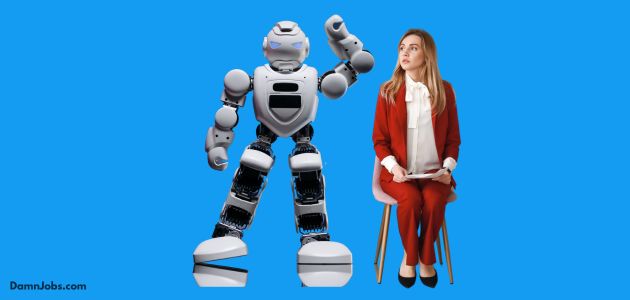In today’s rapidly evolving digital landscape, the discussion about artificial intelligence (AI) and its impact on jobs is more relevant than ever. I’ve witnessed firsthand how AI can be a powerful force for innovation and disruption.
While the advent of AI presents exciting opportunities for augmenting human capabilities and enhancing our work, it also poses significant challenges that we, as a society, must be prepared to face.
The dual nature of AI’s impact on employment demands a nuanced understanding and proactive measures to harness its benefits while mitigating its risks.
Harnessing Human Potential
At its core, AI is about enhancing efficiency and precision in tasks that traditionally require human input.
From data analysis to intricate manufacturing processes, AI technologies are increasingly capable of handling complex tasks with astonishing accuracy and speed.
This shift offers a profound opportunity to free human workers from the monotony and limitations of routine tasks. Imagine a world where humans are no longer bogged down by repetitive data entry or fundamental customer service interactions.
Instead, individuals could focus on tasks that require creativity, empathy, strategic thinking, and interpersonal skills — uniquely human qualities that are not easily replicated by machines.
In this way, AI doesn’t just replace jobs; it augments them, pushing us to leverage our full potential and cultivate skills that differentiate us from machines.
To maximize these benefits, we must invest in education and training programs emphasizing these uniquely human skills.
Schools and corporate training programs should pivot towards fostering creativity, problem-solving, and emotional intelligence.
Encouraging lifelong learning and continuous skill development will ensure workers can adapt to new roles and thrive in an AI-enhanced job market.
Additionally, creating platforms for human-AI collaboration can lead to innovative solutions and improved outcomes across various sectors.
AI-Augmented Jobs
As we envision a future where AI plays a central role in our workplaces, we should consider concrete examples of how different jobs are being augmented by intelligent machines.
These examples demonstrate AI’s potential to enhance productivity and creativity and illustrate the transition towards more meaningful and human-centric roles. In the healthcare sector, AI is revolutionizing the way diagnoses are made.
For instance, AI-powered imaging tools can analyze thousands of medicne photoes to detect anomalies such as tumors at a speed and accuracy rate that surpasses even the most trained radiologists.
This does not replace the doctors but rather augments their capabilities, allowing them to concentrate on patient care and complex medical cases where human judgment is paramount.
Similarly, AI is transforming the educational landscape by providing personalized learning experiences. Intelligent tutoring systems can adapt to each student’s individual learning pace and style, offering tailored educational materials and exercises.
This allows teachers to focus on facilitating in-depth discussions, mentoring students, and developing innovative teaching strategies that no AI can replicate.
AI-driven robots work alongside human workers in manufacturing to perform physically demanding or hazardous tasks. These robots can lift heavy objects or operate in dangerous conditions, reducing workplace injuries and increasing safety.
Meanwhile, human workers can focus on quality control, machinery maintenance, and other critical thinking tasks, where the nuanced human perception is crucial.
In creative sectors such as music, art, and writing, AI tools can analyze vast amounts of data to suggest combinations and ideas that might not be immediately obvious to human creators, thus expanding the horizons of creativity.
For example, AI can suggest chord progressions to musicians or plot ideas to writers, who can then use their unique creative skills to bring these ideas to life in ways that resonate on a human level.
In data analysis, AI transforms traditional roles by automating the routine processing of large datasets. This allows data analysts to shift from basic data handling to strategic decision-making.
Instead of just reporting data, analysts can now focus on interpreting complex datasets, providing deeper insights, and shaping strategic business or policy decisions.
This shift enhances their value to organizations and enriches their job roles by involving them in more high-level, impactful tasks.
The Transition Challenge
However, the integration of AI into the workforce has its challenges. Many roles, particularly those involving routine or predictable tasks, are at high risk of automation.
This includes jobs in data entry, supermarket checkouts, taxi driving, and many others that employ millions worldwide. Additionally, as more entry-level roles are automated, opportunities for on-the-job learning may diminish, which has traditionally served as stepping stones for career development.
This could create a gap where new entrants to the job market need help to gain the initial experience that used to come from these roles.
The challenge lies in the transition. As AI continues to advance, the displacement of workers is inevitable, and only some are ready for such a shift.
The key is to prepare individuals for this change, ensuring they have the skills and support needed to navigate a more automated job market.
This involves significant investment in education and training programs, as well as policies that support workers during periods of job transition.
Educational systems and corporate training programs need to pivot to focus more on developing soft skills like problem-solving, critical thinking, leadership, creativity, and emotional intelligence.
These are the skills that will be most valuable in an AI-dominated workplace.
Moreover, there’s a need for lifelong learning frameworks that allow workers to continuously update their skills and stay relevant in their fields as the demand for technical proficiency evolves.
Governments and organizations should also consider safety nets for those whose jobs are most susceptible to automation.
This could include retraining grants, unemployment assistance, and counseling services to help workers adapt to new roles and industries.
Furthermore, fostering partnerships between sectors, educational institutions, and government bodies can facilitate smoother transitions and ensure that the workforce remains adaptable and resilient despite technological advancements.

